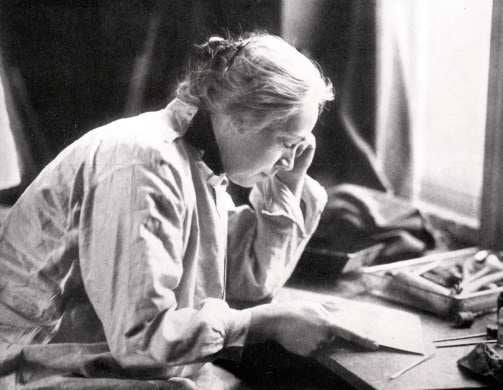
Three recently identified artworks by the German artist Käthe Kollwitz, missing since the end of World War II, are being returned to the Kupferstich-Kabinett, the prints collection in Dresden. The timing is serendipitous, as an exhibition including 70 works by the artist opens there today.
Petra Kuhlmann-Hodick, the museum’s head conservator, told artnet News in an email that the works have yet to arrive at the museum. In fact, they are being brought by a colleague and will arrive November 8 at which time more information will be made available. The works were retrieved by the Finnish customs in Helsinki back in 1984, but it was only a month ago that the museum was notified that the works were indeed by Kollwitz, and were confirmed as having belonged to the museum before going missing by the end of World War II.
They were finally identified by the Kupferstich-Kabinett’s mark on the back of the works and old inventory numbers, but at this time not much more is known about them.
Käthe Kollwitz, Die Mütter (Blatt 6 der Folge “Krieg”), 1921-1922.
Kupferstich-Kabinett, © SKD
The Dresden show is one of several exhibitions across Germany to mark the artist’s 150th anniversary: Here, her drawings and prints will be presented in a double exhibition alongside the South African painter Marlene Dumas.
The museum houses one of the most prominent collections of Kollwitz’s work, whose figurative images and sculptures are best-known for their politically charged depictions of then-marginalized. The Kupferstich-Kabinett Dresden was the first public museum to promote her work, under the directorship of Max Lehrs (1855-1938), before World War II broke out.
It was during an era in which it was nearly impossible for female artists to gain recognition or respect in the art world, and were largely invisible from intellectual, political, and artistic discourse. Kollwitz herself was denied access to the academies, and even denied a prize on the basis that it was rather for “deserved men.” Despite this, she rose.
Käthe Kollwitz (1967-1945) Woman with Dead Child, 1903.
Kupferstich-Kabinett, © SKD
Kollwitz, who died in 1945, has posthumously become a predominant figure in the German art scene, with streets and plazas named after her—especially in Berlin, where she spent many years living and working.
“As the works haven’t arrived yet we will need to think about this question a bit later,” says Kuhlmann-Hodick in regards to whether these retrieved works will be included in the exhibition. “Perhaps they will be displayed in our public prints and drawings study-room adjacent to the exhibition room.”
Käthe Kollwitz Weiblicher Rückenakt auf grünem Tuch, 1903.
Kupferstich-Kabinett, © State Collection Dresden
“Käthe Kollwitz in Dresden” is on view at the Kupferstich-Kabinett Dresden from October 19 – January 14, 2018.